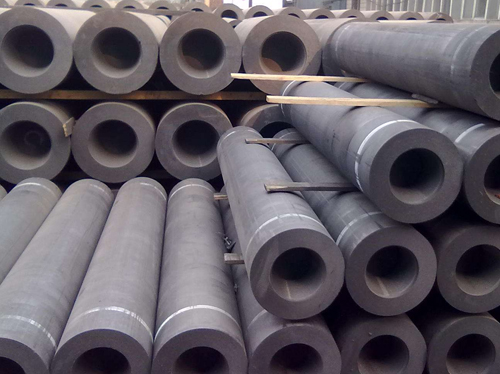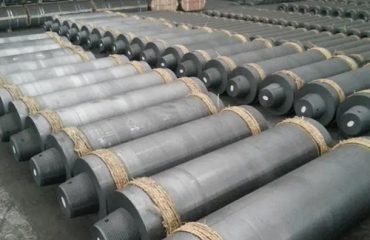
Graphite electrodes are critical components used in electric arc furnaces (EAF) for the steel production industry. In order to produce graphite electrodes, a process flow and production cycle is followed, which involves several steps, including mixing, forming, baking, impregnation, and graphitization. These steps ensure the production of high-quality, reliable, and durable graphite electrodes that meet the requirements of EAF steel production.
The first step in the production cycle of graphite electrodes is the mixing of various materials, including petroleum coke, pitch, and other additives. The composition of the mix is critical as it determines the final properties of the electrodes. Once the mix is prepared, it is then molded and formed into the desired shape and size using a pressing machine.
The next step in the production cycle is the baking process, which is carried out in an electrically heated furnace. During the baking process, the molded mix is heated to temperatures as high as 1000°C in an oxygen-free environment, allowing the pitch to harden and become a solid, ensuring the stability and strength of the electrodes.
After baking, the electrodes are impregnated with a resin that fills any pores or cracks in the material. This is done to increase the hardness, strength, and resistance of the electrodes to thermal shock and mechanical stress. To ensure the resin penetrates through the entire surface, the electrodes are dipped in a bath of molten pitch or other resin.
The graphite electrodes are then graphitized, which is a process that involves heating the impregnated electrodes to temperatures as high as 3000°C in an inert atmosphere. This process is critical as it transforms the impregnated electrodes into high-quality, reliable, and durable graphite electrodes.
Following graphitization, the finished electrodes are then machined to precise specifications, such as dimensions and surface finish, before being subjected to quality control checks. These checks include visual inspections, ultrasonic tests, and electrical conductivity tests, ensuring that each electrode meets the required standards.
In conclusion, the production cycle of graphite electrodes involves several critical steps, including mixing, forming, baking, impregnation, graphitization, machining, and quality control checks. These steps ensure the production of high-quality, reliable, and durable graphite electrodes that meet the requirements of EAF steel production. Through the use of modern technology and advanced techniques, the process flow of graphite electrode production continues to improve, resulting in higher quality products and greater efficiency in the steel production industry.

